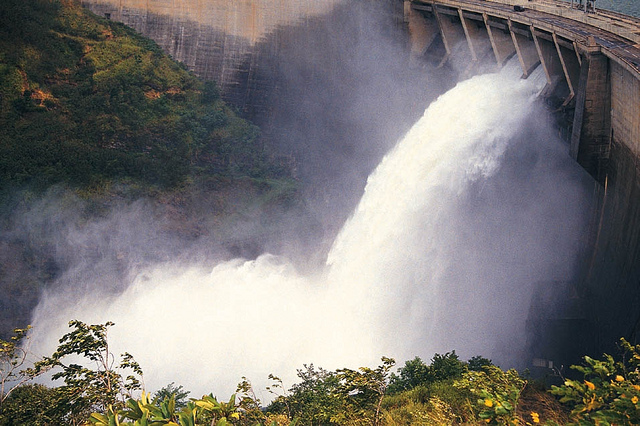In less than six months, Nepal has signed deals with India to build 1,800 megawatts (MW) of hydropower —about triple the amount of electricity currently produced in the country.
During his second visit this year, India’s prime minister Narendra Modi signed an agreement for the 900 MW Arun III dam at the sidelines of South Asian Association for Regional Cooperation (SAARC) meeting in Kathmandu this week, making India the largest hydropower developer in Nepal. In August this year, Modi signed a deal for the 900 MW Upper Karnali dam in western Nepal, the country’s biggest foreign investment deal.
The Arun III dam, planned in the eastern part of the country, is the most controversial hydropower project in Nepal’s history. The World Bank withdrew financial support back in the 1990s after huge protests from national and international NGOs.
The Upper Karnali dam has also been mired in controversy, with some political parties demanding the deal be scrapped.
While hydropower has been the subject of intense debate and vehement protests in the past, now the deals have finally been signed, public reaction has been relatively muted.
Many people believe it is Modi’s hydro diplomacy that has allowed the two countries to push through proposals so fast and sign deals on projects that have been stalled for many years. Modi managed to reduce anti-Indian sentiment in Nepal during his first visit to the country in August this year. He also has tried to convince the frustrated Nepali public, reeling under severe energy shortages (suffering up to 15 hours of power cuts every day for years), that India is Nepal’s most reliable hydropower ally.
“Modi speaks the language of the people and in a way that normal Nepalis want to hear from an Indian leader. For years Nepalis have been frustrated by the Indian style of acting as a big brother,” said Ratan Bhandari, an activist campaigning for peoples’ rights to water.
The projects still have their share of critics. A prominent group of activists, including former top bureaucrats, politicians and experts, issued an open letter to the prime ministers of both countries in November, calling for the Upper Karnali project to be scrapped, but they have remained silent over the recent Arun III deal. Almost all of them were played a leading role in the protests against the dam in the 1990s.
Interestingly, this group is not against hydropower development itself: they are calling for an even larger dam to be built – one that will generate four times as much electricity. “We are not against hydropower development but the government of Nepal has sold a diamond at the price of coal. So the Upper Karnali is not in the interest of Nepal or India,” said Ratna Sansar Shrestha, member of the activist group that wrote the public letter and refer to themselves as the Civil Society Alliance for Rational Water Resources Development in Nepal.
The letter states, “As the total potential capacity [of the site]stands at 4,180 MW, building a 900 MW run-of-the-river plant would produce relatively expensive 1,000 gigawatt hours (GWh) of energy every year, while a redesign with storage option would produce 9,000 GWh. The current option thus constitutes ‘killing’ the full potential of this site.”
But the government has become frustrated with drawn out debates and delays. “We have talked about the potential options for so long, the time has come to move forward and implement what we have at hand and what is possible. We can’t afford to keep debating numbers,” said senior bureaucrat in Nepal’s Energy Ministry on the condition of anonymity.
The government has not issued an official response to concerns raised by activists, but authorities have hailed the deals as a milestone achievement. “We see ample opportunities for Nepal to bring investment from India and we can offer assurance that we haven’t compromised Nepal’s interests by signing this document,’ said Radha Gyawali, Nepal’s Energy Minister, after signing the Arun III project on Tuesday.
Nepal will get about 22% of the energy (about 200 MW) from each dam for free. The two projects will bring more than 200 billion Nepali rupees (US$2 billion) of Indian investment to Nepal.
Modi suggested India will invest in more hydropower projects in Nepal in the future during his speech at the SAARC meeting on Wednesday: “Do we want to face a future when someone looks down at us from Space and says that this is the world’s darkest corner? Let us treat electricity as a commodity like any other that we invest and trade in. India will fully support these initiatives in the region”.
But given the current pace of the deals, many activists are worried environmental and social impacts of hydropower will brushed aside by a government that ignores their genuine concerns.

